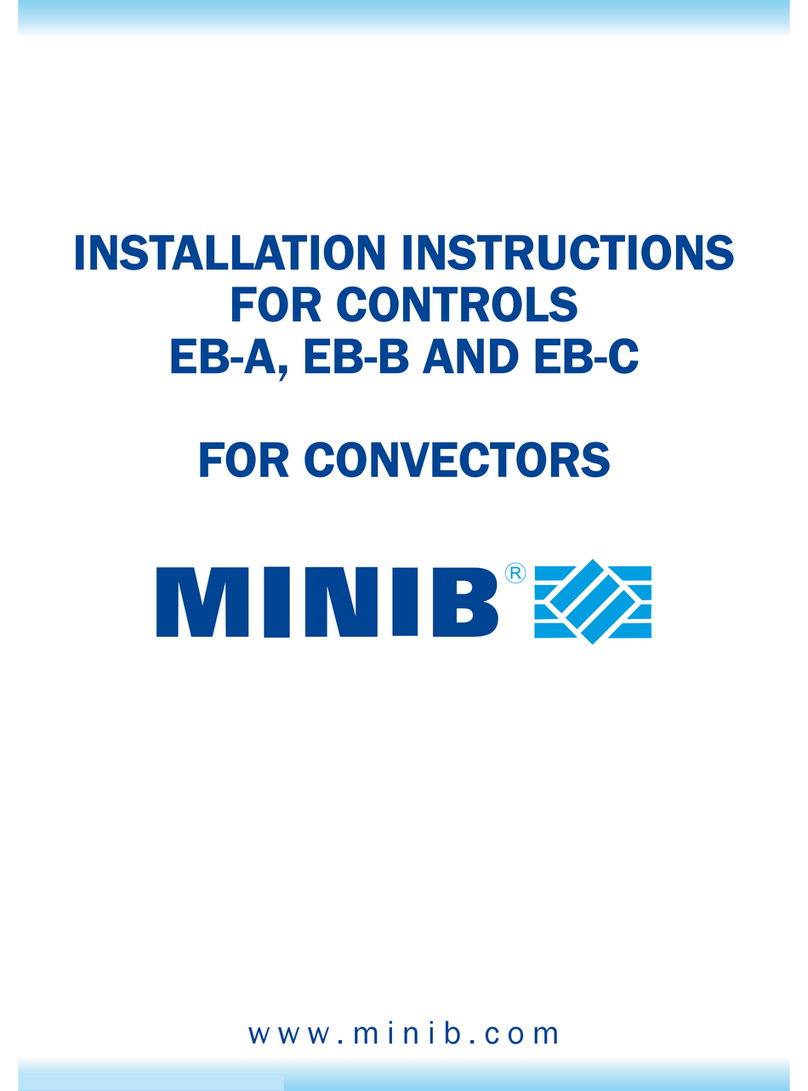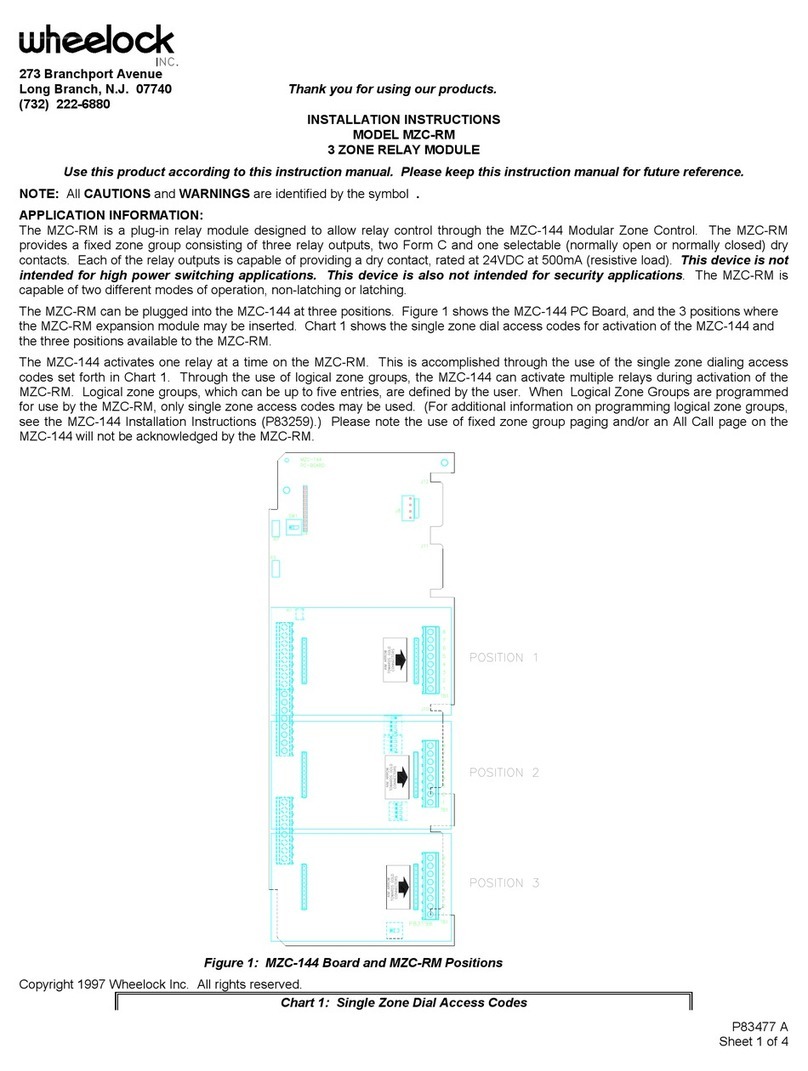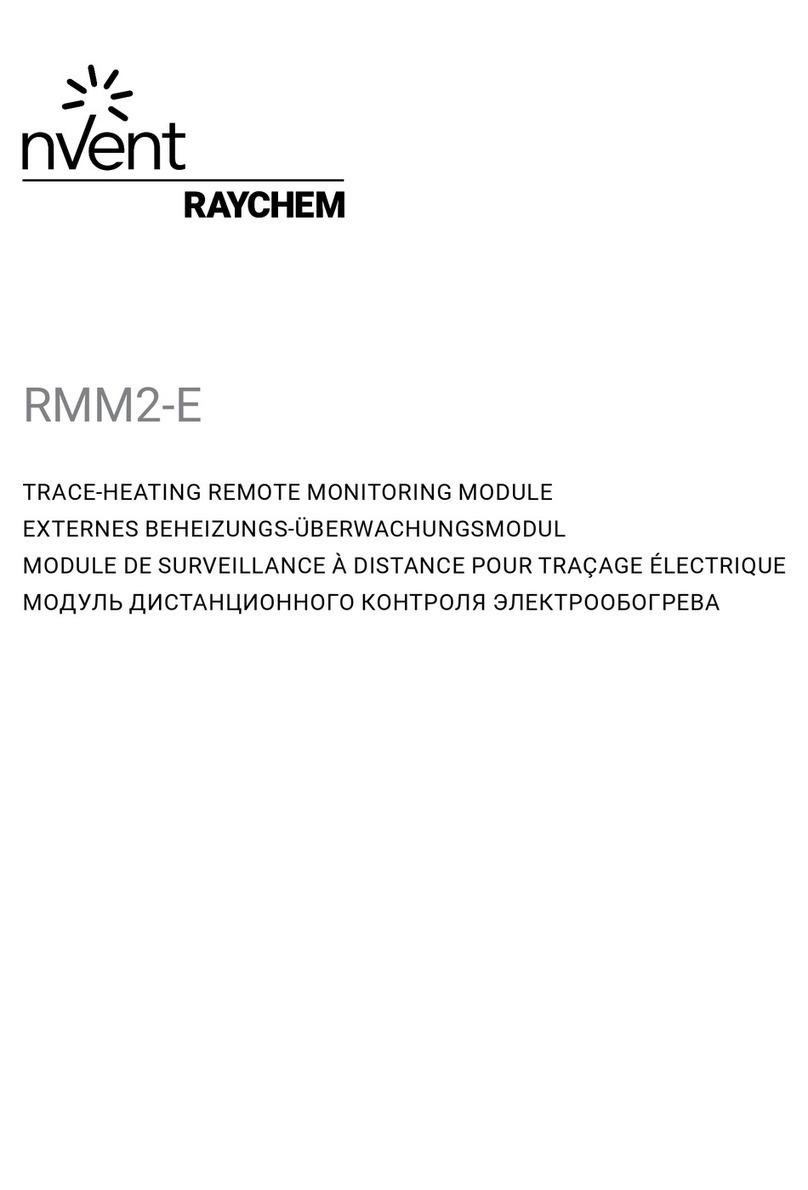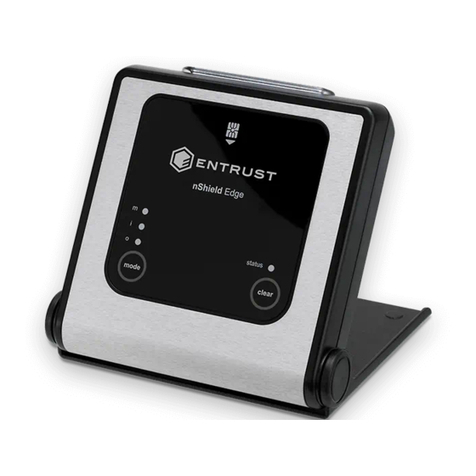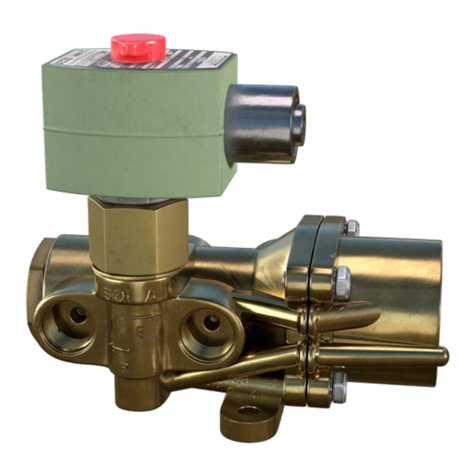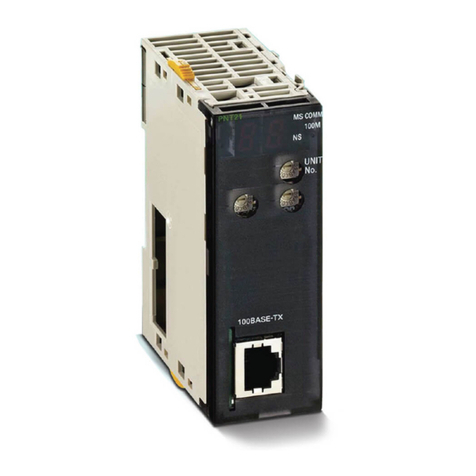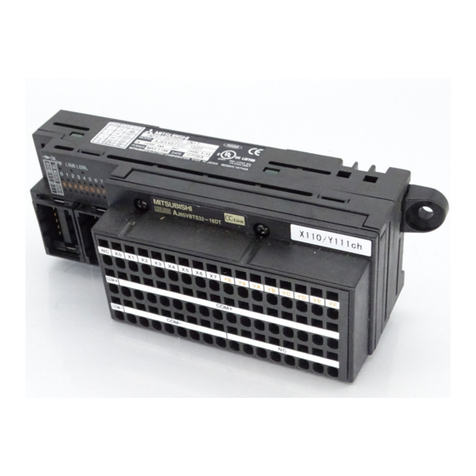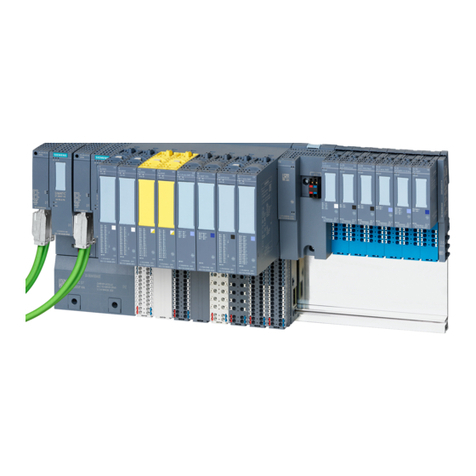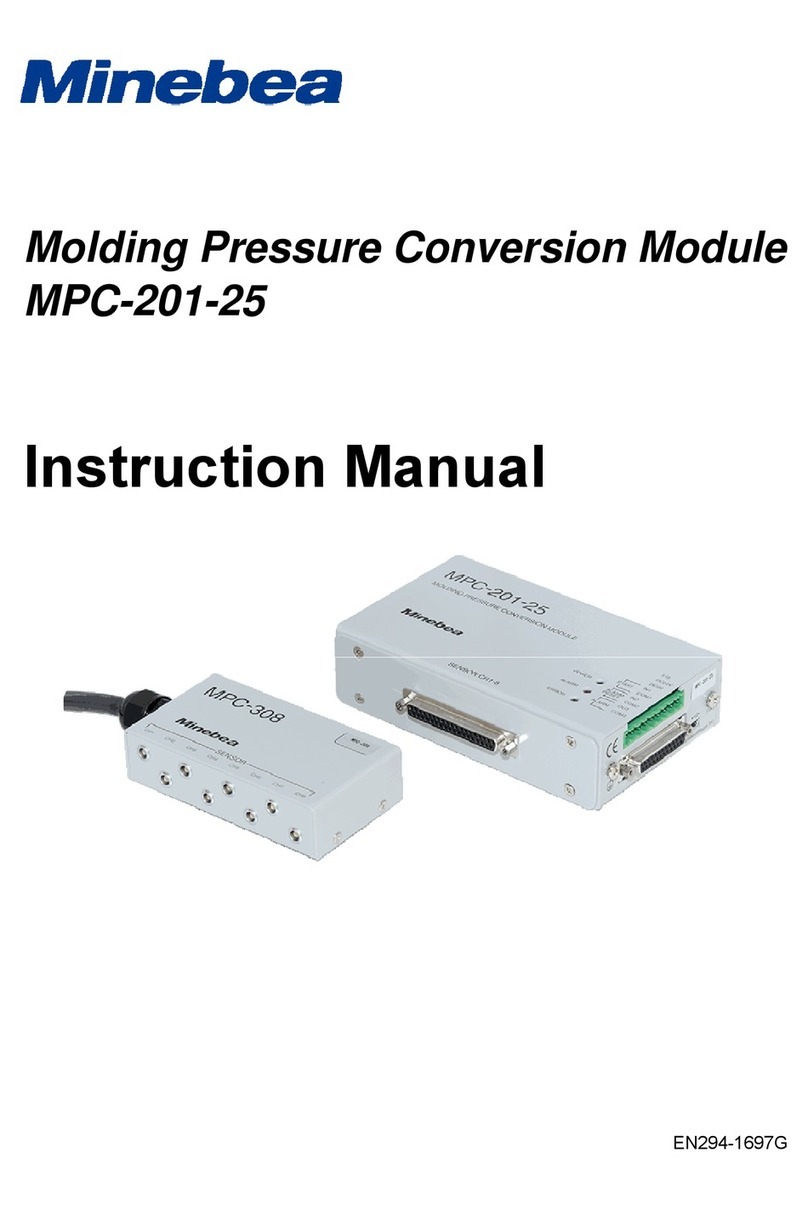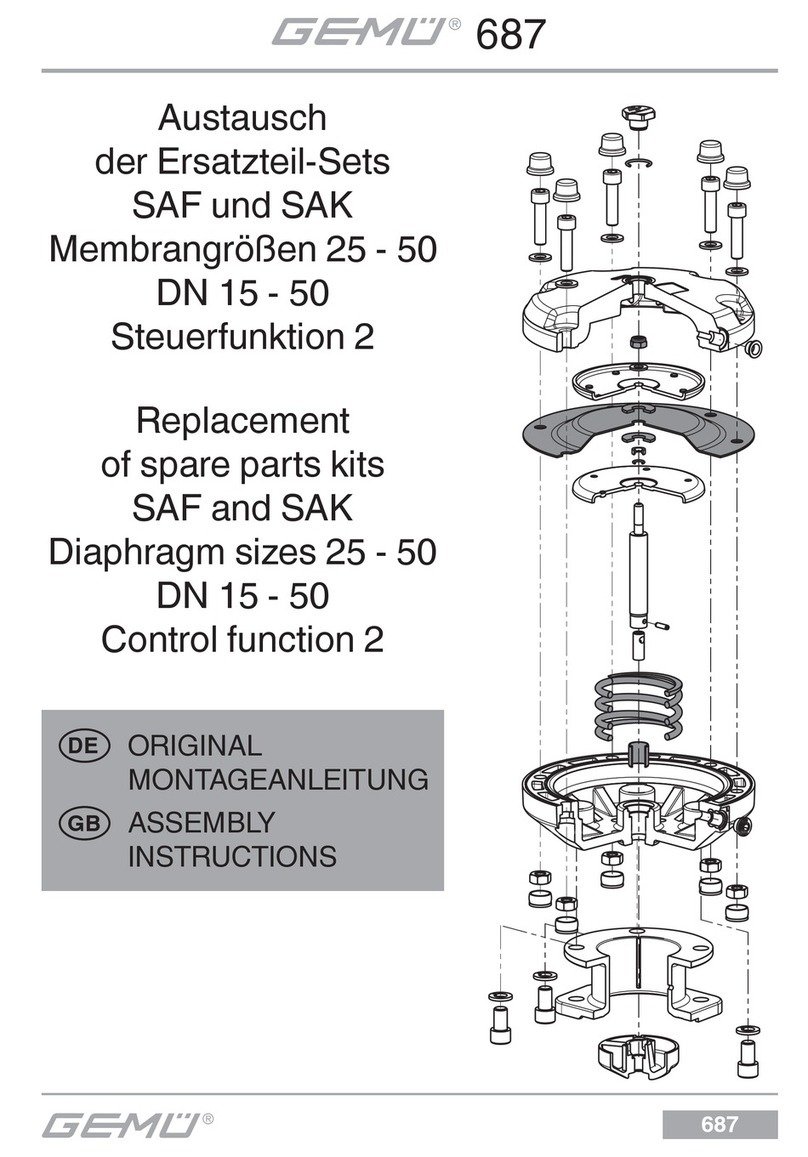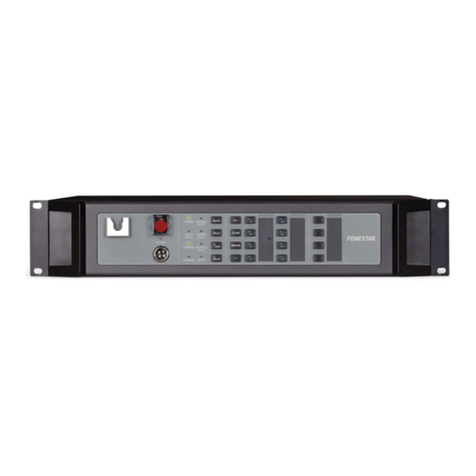Sirca TRUNNION S30T Series Quick start guide

TRUNNION side entry ball valves
S30T series
TECHNICAL MANUAL:
INSTRUCTIONS for: INSTALLATION USE and MAINTENANCE
MUI-S30T - Rev.01 – 09/2019

1
INDEX:
I - INTRODUCTION
MAIN SPECIFICATIONS
VALVE CONTROL
WARNING CONCERNING THE USE
II - INSTALLATION
GENERAL WARNINGS
GENERAL REQUIREMENTS
SPECIAL REQUIREMENTS
CONDITIONS OF USE
III - COMMISSIONING
PRESSURI ATION
INSPECTION OF THE EXTERNAL TIGHTNESS
INSPECTION OF THE INTERNAL TIGHTNESS
IV - MAINTENANCE
GENERAL INSTRUCTIONS
REPLACMENT OF THE:
- 4.0 - O-RING (34) and GRAPHITE (73) OF THE STEM
- 4.1 - O-RING (35) and GRAPHITE (70) OF THE BONNET
- 4.2 - BEARINGS (28A) and THRUST WASCHER (25) of the stem
- 4.3 - SEATS (7)
- 4.4 - BEARINGS (28) and THRUST WASCHER (22) of the ball
V - LUBRICATION
VI - STORAGE
VII - SUGGESTED SPARE PARTS
For the items specified in this manual, refer to the drawing on page 6.

2
I - INTRODUCTION
Purpose of this manual is to provide essential information for the installation, commissioning and maintenance
of the Trunnion ball valves S30T series. Below is a brief summary of the main characteristics of the ball valves.
MAIN SPECIFICATIONS
The S30T ball valves are cut-off devices fit for the use both on gaseous fluids and liquids for a wide range of
pressures.
The main specifications of these valves are:
steel body with tail pieces fit for the flanged coupling and with machining for butt welding;
parts in direct contact with the fluid are available on request with treated nickel (or chromium)-based
coating;
soft insert on the seat for a better tightness also for uses on gaseous fluids
VALVE CONTROL
The valve opening and closing operations are performed with the lever control or with different types of controls
(gear box, pneumatic actuator, etc.); please kindly refer to the specific use and maintenance instructions for
these last ones.
WARNINGS AS REGARDS THEIR USE
The S30T ball valves are fit to be used completely opened or completely closed: therefore they shall not be
used for lamination.
The position of the valve may be determined when the valve is assembled as follows:
valve with lever control: the lever is in the direction of flow with open valve or perpendicular to the
flow with closed valve
valve with handwheel control or different control: the open and close position is specified by
indicators placed on the control itself.
II - INSTALLATION
GENERAL WARNINGS
Before the installation, commissioning, or maintenance, the operators shall:
examine the safety devices applicable to the installation where they have to work
obtain the necessary authorizations to work, when required
equip oneself with the necessary individual protections (helmet, goggles, etc..)
make sure that the area where they have to work is equipped with the required collective protections
and with the necessary safety signs.
The handling of the equipment and of its components shall be carried out after evaluating that the lifting devices
are fit for the loads to be lifted ( lifting capacity and functionality ). The handling of the equipment shall be
carried out by using the lifting eyes arranged on the equipment itself.
The use of motorized means is reserved to the personnel in charge of this.
In case the installation of the system and of its accessories requires the application of compression fittings,
these shall be installed by following the instructions of the manufacturer of the compression fittings. The choice
of the compression fittings shall be compatible with the use specified for the equipment and with the plant
specifications, where required.
The commissioning shall be carried out by properly trained personnel.

3
During the commissioning, not strictly necessary personnel shall be moved away and the prohibition area shall
be properly signaled (signs, barriers, etc…).
GENERAL INSTRUCTIONS
The valve installation shall be carried out in compliance with the prescriptions (laws or regulations) in force in
the place of installation.
In particular the specifications of natural gas plants shall be in compliance with the law provisions or
regulations in force in the place of installation or at least in compliance with the EN 12186 or EN12279
regulations (we remind that the installation in compliance with such laws minimizes the risk of fire
hazard).
The valve is delivered without external pressure limiting devices; therefore it shall be installed by making sure
that the operating pressure of the unit where it is installed never exceeds the value of the permissible maximum
pressure (PS). Only for limited periods of time peaks with value equal to 1.1 x PS are permitted.
The user, in case he considers it necessary, shall install suitable pressure limiting devices;
The shall moreover arrange suitable venting or draining system to discharge the pressure and fluid inside the
plant before carrying out any inspection or maintenance operation.
We wish to remind, however, that the special design of the seal seats allows discharging to the line any
overpressure that may be generated in the body cavity among the seal seats.
SPECIAL INSTRUCTIONS
Before installing the valve it is necessary to be sure that:
the valve may be inserted in the arranged space and it is sufficiently accessible for the following
maintenance operations; see dimension drawings with dimensions and weights
the upstream and downstream pipelines are at the same level as the inlet and outlet connections and
they can support the weight of the valve
the pipeline inlet/outlet flanges are parallel to the valve seal surfaces
the inside of the valve is clean and the valve itself was not damaged during the transport
the upstream pipeline was cleaned in order to expel residual impurities such welding slag, sand,
varnish waste, water, etc.
The valve does not have a preferential flow direction, therefore it may be installed in any position (vertical or
horizontal flow) Starting from DN 150, the valve is equipped with its own supports; the user shall manufacture
the plant so that is may support the valve itself and not overload with further stresses the connections to the
pipelines.
The connections to the inlet and outlet pipelines are carried out:
by means of standardized flanges the sizes and types of which are showed on the data plate; the
choice of the connecting screws and of the seal gaskets shall be made by the installer who shall
consider such information and the conditions of use in the place of installation.
by means of a butt welding; in this case the installer shall take the necessary precautions in order to
avoid thermally stressing the valve during the welding operations. During the welding operations the
valve temperature shall not exceed the 130 °C value.
We recommend, during the installation phase, to keep the ball in a fully open position, in order to prevent the
seal seats and the ball surface from being damaged by foreign bodies or impurities.
After the installation, open and close the valve in order to check its correct operation.

4
SOME INFORMATION:
Regarding the DRAIN PLUG and the BLEEDER VALVE:
The S30T trunnion ball valve are equipped with a drain plug (36) and bleeder valve (35). These accessories
are positioned on the valve body.
The drain plug is used to take out possible fluid residues. Unscrew the plug only if the valve and the pipe line
are not pressurized, and only if the temperature of the fluid inside is such as not to cause scorchs or burns.
The bleeder valve allows to unload possible overpressures that can be form between the ball and valve body.
You can make the vent by unscrewing the internal screw, using a hexagonal wrench.
IMPORTANT! If the valve remains for a long time in CLOSED position, it is recommended to open the bleeder
valve so as to avoid excessive pressure between the ball and the body. But if the valve remains in OPEN
position for a long time or working in ON-OFF service, make sure that the bleeder valve is fully closed.
CONDITIONS OF USE

5
We recommend checking, before commissioning, that the conditions of use are in compliance with the
equipment specifications. Such specifications are reported on the identification plates of each valve. The
following is an example of nameplate:
(example marking label)
Moreover, the user shall check that the used materials and the applied surface treatments, if any, are
compatible with the expected use.
Considering the valve geometric specifications, during the design phase no stresses due to traffic, wind, or
seismic events were taken into consideration; therefore, the user shall take proper precautions in order to limit
the effects of such events on the assembly, when these are expected.
III - COMMISSIONING
PRESSURIZATION
After the installation, check that the connections to the line are correctly executed and that the vents and
drainages on the plant, if any, are closed.
Slowly pressurize the plant (or the plant section) by means of the upstream process valve or of other systems
arranged for this.
CONTROL OF THE EXTERNAL TIGHTNESS
The tightness test of the valve connections to the plant shall be carried out according to the provisions in force
in the place of installation.
The external tightness is ensured when coating the element under pressure with a foaming agent, no bubbles
appear.
In case of liquids, the tightness is ensured where there are no visible leaks from the connections.
CONTROL OF THE INTERNAL TIGHTNESS
It is possible to check the internal tightness without disassembling the valve from the plant and without
depressurizing the line where the valve is installed.
After placing the valve in a fully open or closed position, keep the pressure in the line, open the bleeder valve
(35) and check that there is no constant fluid leak from it.
IV - MAINTENANCE

6
NOTE: For the items shown in the following instructions, please refer to the drawing below.
The drawing refers to a S30T trunnion ball valve, std configuration.

7
ATTENTION!!!
FOR ANY MAINTENANCE OPERATIONS
WE RECOMMENDED TO REMOVE THE BALL VALVE FROM THE PIPE LINE.
GENERAL INSTRUCTIONS
The inspection and maintenance interventions are strictly linked to the quality of transported fluid. It is therefore
advisable to perform a preventive maintenance, of which periodicity, if not established by the regulations, is
relevant to:
the quality of the transported fluid
the cleanness and preservation state of the pipelines in the plant; in general, after the first start of the
plants, more frequent maintenance services are required because of the poor cleanness inside the
pipelines

8
the usury of the O-rings, of the graphite and of the seats, depends on the type of conditions under
which the valve is subjected. If the working conditions are more severe, the time between maintenance
operations is shorter
in case of leakage, difficult operating, locking of the ball, it is necessary to make a maintenance
operation
The periodical maintenance concerns also the state of the external surfaces of the valve. In particular the
surface protections shall be restored (usually the varnishing) in case they are worn.
Before performing any intervention, make sure that the plant section where you operate has been upstream
and downstream cut-off and that the pressure in the concerned pipeline section has been discharged. Besides,
we recommend discharging the pressure from the valve body through the drain plug placed on the body of the
valve itself (pos. 36). Moreover, make sure to have a series of recommended spare parts. The spare parts
shall be SIRCA INTERNATIONAL S.p.A. genuine spare parts.
NOTE:
The use of NOT ORIGINAL spare parts relieves the manufacturer from any liability.
REPLACMENT OF THE:
4.0 - GRAPHITE (27) (28) O-RING (25) (26) of the stem and bonnet
Check that the valve is completely closed (or open). Discharge the pressure from valve body by leaving the
vent bleeder valve is open (35).
Remove the control and the adapter, if equipped.
ATTENTION!!! Before removing the control, to ensure that the operator is switched off and is not powered
pneumatically or electrically. Also use appropriate lifting systems.
Unloose the screws (31), remove the top mounting flange (09). After removing the flange, remove the
cylindrical pin (29).
Unloose the screws (30), remove the stuffing plate (08). After remove the cylindrical pin (29).
Now you can replace mounting flange and bonnet seal graphite (27 28), the inside stem O-ring (25) and (26).
Check the conditions of the stem thrust washer (20) and the stem bearing (19). If damaged, replace it.
For mounting proceed as follows:
Clean very well and lubricate all the seal graphite and the O-rings. Clear all the housing (slot). Now insert the
seal and the O-rings in their housing.
Insert the stuffing plate (08) by slightly turning and pushing it down, if you need help with a rubber mallet. The
bonnet must be aligned and positioned using the cylindrical pins (29).
Insert and tighten the screws (30).
Insert the top mounting flange (09) by slightly turning and pushing it down, if you need help with a rubber
mallet. The flange must be aligned and positioned using the cylindrical pins (29). Now, insert and tighten the
screws (31). At the end check that all screws are tightened. Make an opening-closing movement, the ball
should move easily. After the valve installation, make a pressure test of the same, making sure there are no
leakage.
If ok, proceed to the installation of the adapter and the control.
4.1 - GRAPHITE (13) O-RING (14) of the closure
Bring the valve to the closing position and discharge the pressure from the pipeline both upstream and
downstream.
Discharge the pressure from the body leaving the vent bleeder valve open (35).
Remove the control and the adapter, if equipped.

9
ATTENTION!!!: before removing the control, to ensure that the operator is switched off and is not powered
pneumatically or electrically. Also use appropriate lifting systems.
Remove the valve from the pipeline and place it on the workbench with the closure (02) upwards. Fix the
valve so that it does not move.
Remove the nuts (12). Lift the closure (02) with a proper lifting system.
Place the closure on the table and remove the O-ring (14) and seal graphite (13) demaged.
Clean very well and lubricate all the seal graphite and the O-rings. Clear the housing (slot). Now first insert
the new seal graphite (13) and then the O-ring (14) in their housing.
Lift and insert the closure (02) on the stud bolts (10) so that the closure itself is inserted on the body (01) and
that the closure is inserted on the housing.
Verify the correct alignment of the closure respect to the cylindrical pin (24) of the bearing retainer. When they
are aligned, to go down slowly the closure.
Gradually and evenly tighten the nuts (12). We recommended to follow a sequence of cross closing, using a
torque wrench. The tightening torque is defined according to the material of the screw.
In order to replace the second side, overturn the valve and carry out the above operations.
Make an opening-closing movement, the ball should move easily. After the valve installation, make a pressure
test of the same, making sure there are no leakage.
If ok, proceed to the installation of the adapter and the control.
4.2 – THE SEATS+INSERT (06+05)
Bring the valve to the closing position and discharge the pressure from the pipeline both upstream and
downstream.
Discharge the pressure from the body leaving the vent bleeder valve open (35).
Remove the control and the adapter, if equipped.
ATTENTION!!!: before removing the control, to ensure that the operator is switched off and is not powered
pneumatically or electrically. Also use appropriate lifting systems.
Remove the valve from the pipeline and place it on the workbench with the closure (02) upwards. Fix the valve
so that it does not move.
Remove the nuts (12). Lift the closure (02) with a proper lifting system.
REMOVING THE CLOSURE, EVEN REMOVING THE SEAT (the seat is positioned within the enclosure).
Now it is possible to remove the seat (06+05) with the seat springs (21) the O-ring (23) and graphite seat
gasket (22) ATTENTION: the seat springs (21) must remain in their housings. Clean and lubricate the new O-
ring and insert the same in to the slot. Do the same for the graphite seal ring.
Check that all springs are in its housing, if necessary grease them slightly.
Clean and lubricate the surface of the closure where the seat will be insert.
Positioning the seat (06+05) on the closure (02), perfectly in axis.
Manually push the seat into the housing of the closure, if necessary help themselves with a rubber mallet.
The seat must enter straight.
Now lift and insert the closure (02) on the stud bolts (10) so that the closure itself is inserted on the body (01)
and that the closure is inserted on the housing.
Verify the correct alignment of the closure respect to the cylindrical pin (24) of the bearing retainer. When they
are aligned, to go down slowly the closure.
Gradually and evenly tighten the nuts (12). We recommended to follow a sequence of cross closing, using a
torque wrench. The tightening torque is defined according to the material of the screw.
In order to replace the second seat, overturn the valve and carry out the above operations.
Make an opening-closing movement, the ball should move easily. If ok, proceed to the installation of the
adapter and the control. After the valve installation, make a pressure test of the same, making sure there are
no leakage.

10
4.3 – THE BEARING (15) and THE THRUST WASHER (16) of the ball
Bring the valve to the closing position and discharge the pressure from the pipeline both upstream and
downstream.
Discharge the pressure from the body leaving the vent bleeder valve open (35).
Remove the control and the adapter, if equipped.
ATTENTION!!!: before removing the control, to ensure that the operator is switched off and is not powered
pneumatically or electrically. Also use appropriate lifting systems.
Remove the valve from the pipeline and place it on the workbench with the closure (02) upwards. Fix the valve
so that it does not move.
Put the ball in the close position.
Unloose the screws (31), remove the top mounting flange (09). After removing the flange, remove the
cylindrical pin (29).
Unloose the screws (30), remove the stuffing plate (08). After remove the cylindrical pin (29).
Remove the stem (04).
Now, remove the nuts (12). Lift the closure (02) together the seat, with a proper lifting system. After, lift the ball
along with two bearing retainer plate (07).
Place the ball on the bench taking care not to scratch it.
Slide off the bearing retainer. Remove the ball thrust washer (16).
Remove the bearing (15) from the bearing retainer plate (07).
Take the new bearing and insert them into the bearing retainer plate.
ATTENTION!!!: the cutting of bearings must be perpendicular to the flow direction (or thrust direction)
Now, after cleaning the ball accurately, insert the new ball thrust washer (16). Insert the bearing retainer plate
(07) with new bearing (15). Positioning the bearing retainer plate perpendicular with the hole of the ball.
Lift the ball and slowly bring it above the valve body. Align the cylindrical pin of the bearing retainer plate with
the hole of the closures. Slowly lower the ball up to insert it completely into the body. The ball must be in close
position.
Now lift and insert the closure (02) on the stud bolts (10) so that the closure itself is inserted on the body (01)
and that the closure is inserted on the housing.
Verify the correct alignment of the closure respect to the cylindrical pin (24) of the bearing retainer. When they
are aligned, to go down slowly the closure.
Screw the nuts by hand, but do not tighten.
Place the valve horizontally.
Positioning the stem into the slot. Verify that the key is aligned with the hole of the ball.
Insert the stuffing plate (08) by slightly turning and pushing it down, if you need help with a rubber mallet. The
bonnet must be aligned and positioned using the cylindrical pins (29).
Insert and tighten the screws (30).
Insert the top mounting flange (09) by slightly turning and pushing it down, if you need help with a rubber
mallet. The flange must be aligned and positioned using the cylindrical pins (29). Now, insert and tighten the
screws (31).
Gradually and evenly tighten the nuts (12). We recommended to follow a sequence of cross closing, using a
torque wrench. The tightening torque is defined according to the material of the screw.
In order to replace the second seat, overturn the valve and carry out the above operations.
Make an opening-closing movement, the ball should move easily. After the valve installation, make a pressure
test of the same, making sure there are no leakage.
If ok, proceed to the installation of the adapter and the control.

11
V – LUBRIFICATION
The valves are already lubricated during the assembly phase (with the most suitable product for the operation
if it is specified in the order) for the following reasons:
1) ease the components assembly
2) improve maneuverability
3) ease the preservation in case of warehouse storage.
As regards the choice of lubricants, it is necessary to pay attention to the type of fluid to be cut-off, we suggest
using the following listed lubricants in the below mentioned cases:
a) for oxygen: we suggest DuPont TM Krytox® grease
(or similar special greas certified for oxygen service).
ATTENTION!!! Other lubricants or greases may generate explosive mixtures.
b) for food products: Vaseline or similar not-toxic materials.
In all other cases, use products compatible with the expected conditions of use (temperatures) following the
manufacturers’ suggestions and paying attention not to use corrosive products damaging the rubber parts.
For special applications we suggest to require information specifying in detail the type of fluid to be cut-off and
the operating conditions.
ADDITIONAL LUBRICATION:
The S30T ball valve is equipped with grease injector on the neck for stem (34). And can be equipped on
request with grease injector (37) on closure for the seals . With special ducts the grease gets to lubricate all
moving parts. Grease fittings (37) are on the opposite side of bleeder valve so the operator can work in
total safety.
To inject the grease into the emergency lubricator you must unloose the plug with a 360° rotation; inject the
grease with a special injection pump.
In order to inject the grease, it is necessary to use a pump with a max. operating pressure higher than 20 bar
of the valve max. operating pressure at the moment of lubrication.
In normal working conditions it is recommended to lubricated the valve every 6 months. If the valve remains
open or closed for a long time, we suggest the lubrication once a month, making even an operation of opening
and closing.
Grease injector (34) and (37) can be positioned on the opposite side to bleeder valve (35), this to operate in
total safety.

12
VI – STORAGE
The S30T Trunnion ball valves of Sirca International, do not require specific precautions in case of storage for
long periods; anyway it is recommended to pay attention to:
The condensation must be avoided through suitable warming and ventilation system
The store must be dry and undusty, the ambient temperature shall avoid freezing events and the
temperature greater value shouldn’t be more 30°C
The stored materials consumption shall be managed in order to avoid a long store time
keep the valves in the original packing
keep the protections applied in the factory on the flanged connections. (The valves are supplied with
a protective film on the flange sealing surface, and with appropriate protective plastic caps)
keep the valve in the closed position to safeguard the state of the tightness and valve seats
store the rubber parts away from direct sun light, in order to avoid a fast aging
protect the tightness seat from dust or other material. In case this happens, before installing it, carefully
clean the tightness and ball seats
VII – SUGGESTED SPARE PARTS
For the S30T Trunnion ball valves, the suggested spare parts are usually:
the gaskets of the various joints (O-ring)
the graphite rings
NOTE:
the seal+insert only on request.
When ordering the spare parts, to mention:
Type of valve (primarily: DN, class, flange drilling, materials)
CR n°
Year of manufacture
Type of fluid used and work conditions
Part no. (item shown on the exploded view or sectional drawing)
Quantity
THE DATA ARE INDICATIVE. WE RESERVE THE RIGHT TO MAKE MODIFICATIONS WITHOUT PRIOR NOTICE.
Table of contents
Popular Control Unit manuals by other brands
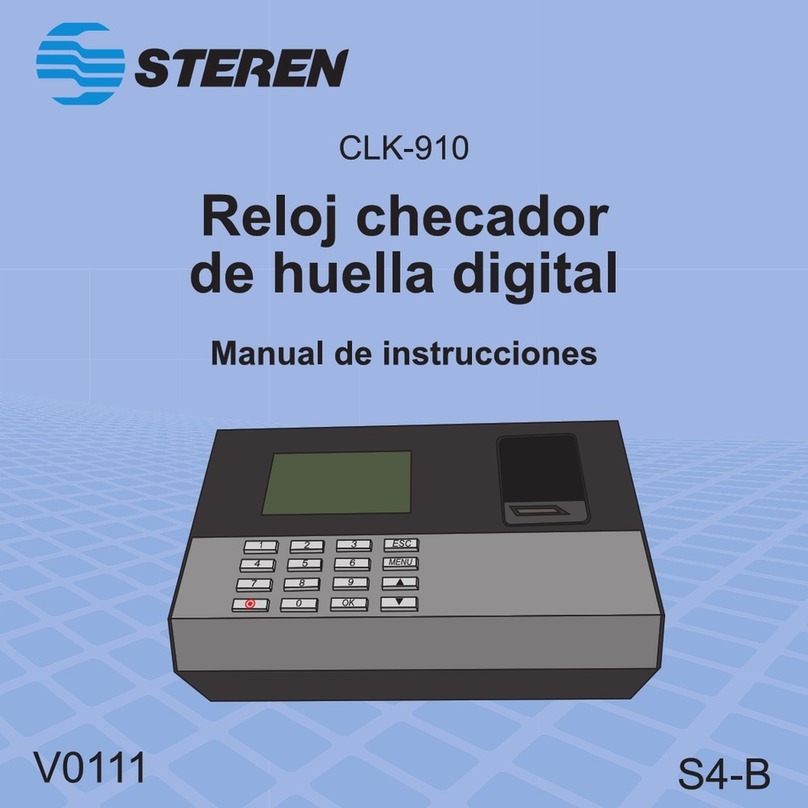
Steren
Steren CLK-910 instruction manual
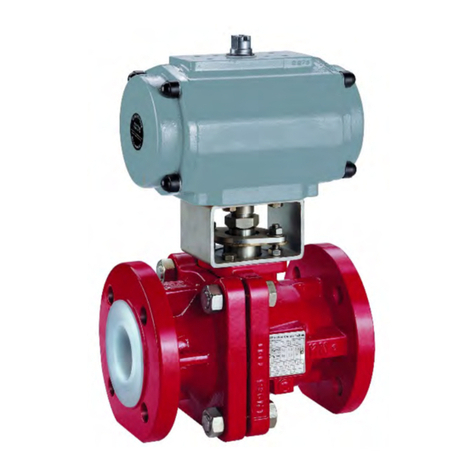
Richter
Richter KN/F Series Installation and operating manual
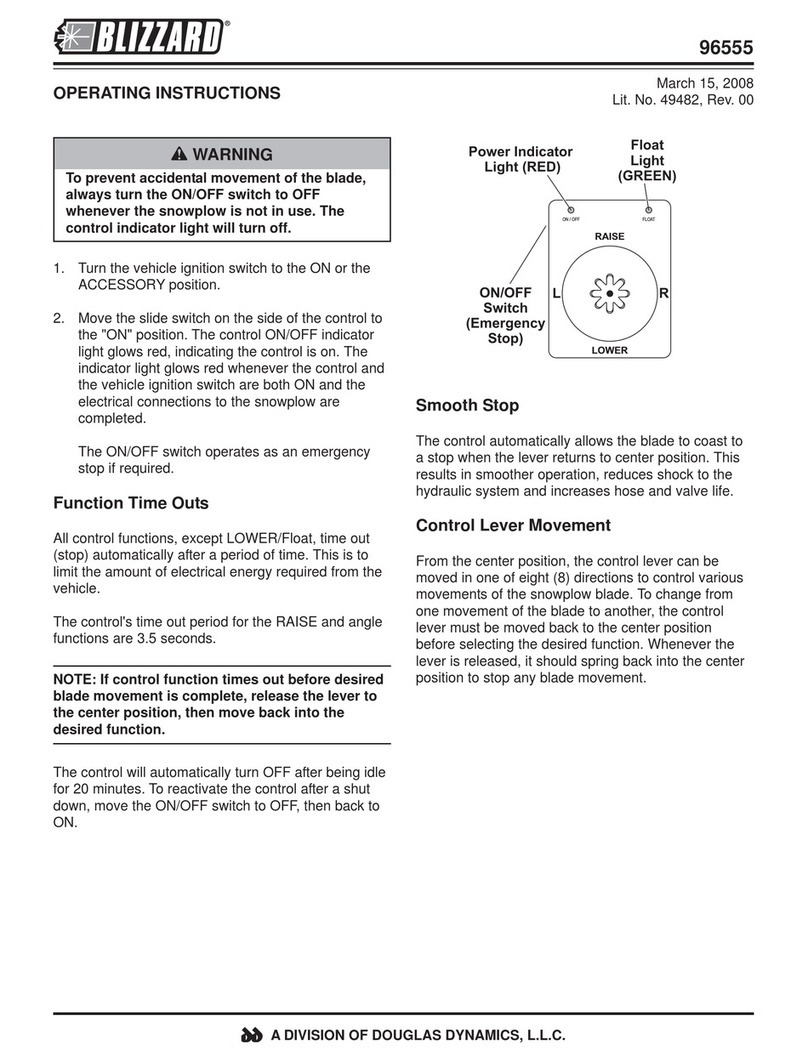
Blizzard
Blizzard 96555 operating instructions
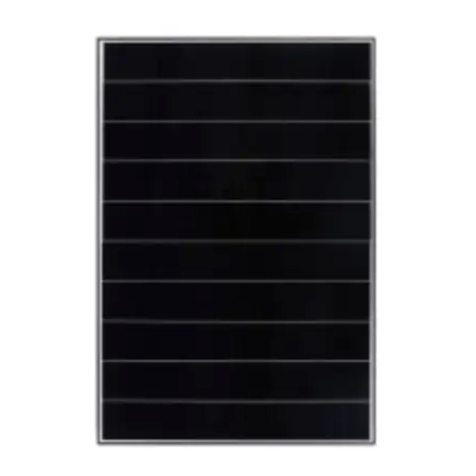
kensol
kensol KS M5-S Series installation manual
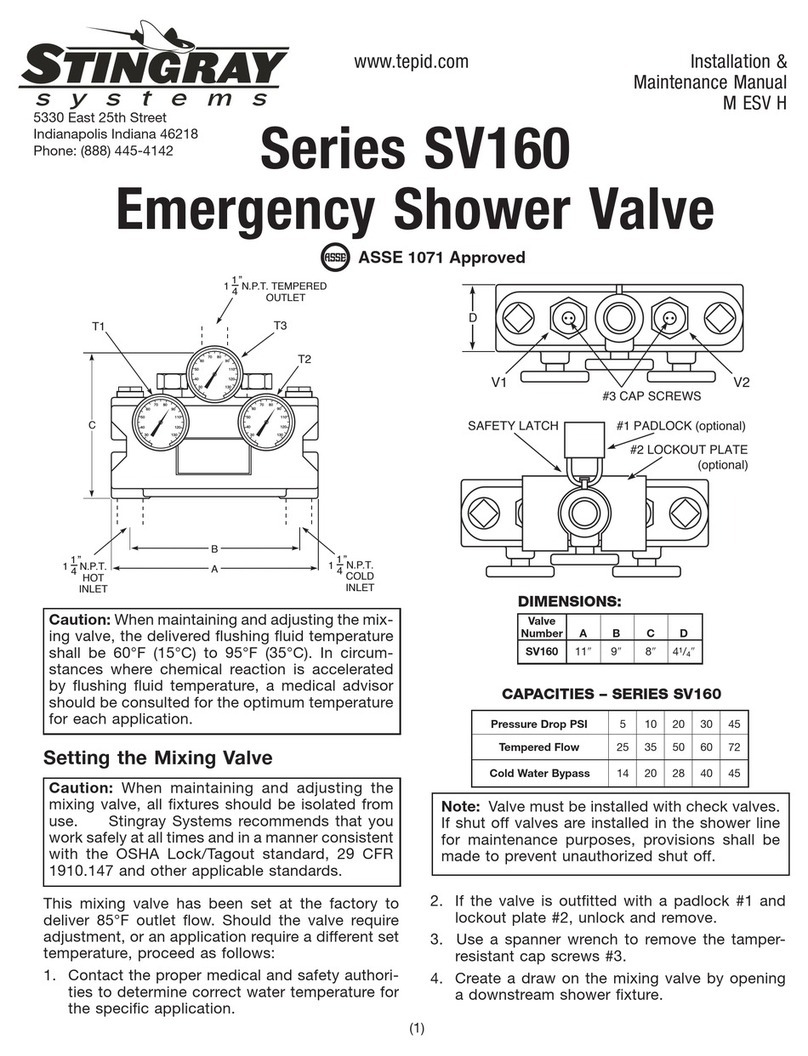
Stingray
Stingray SV160 Series Installation & maintenance manual

Kutai electronics
Kutai electronics ECU-04 quick start guide
